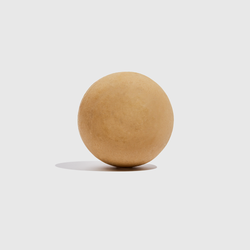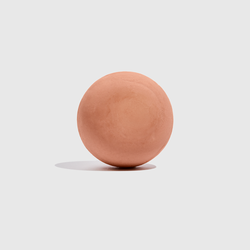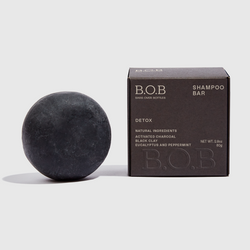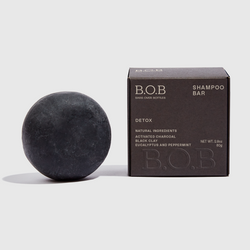How To Use Leave-In Conditioner: Benefits & Tips You Need To Know
Index
- What is a leave-in conditioner?
- Benefits of learning how to use leave-in conditioner
- Leave-in conditioner keeps your hair hydrated
- Leave-in conditioner can control frizz
- Leave-in conditioner protects against heat damage
- Leave-in conditioner can define curls and waves
- Leave-in conditioner can help hair color last longer
- Leave-in conditioner is a lightweight alternative to traditional conditioner
- How to use leave-in conditioner
- Potential concerns when learning how to use leave-in conditioner
- Choosing the best leave-in conditioner for your hair
Leave-in conditioner is a product EVERYONE can benefit from, but so few are actually using it! Are you one of them? Perhaps it’s because you don’t know how to use leave-in conditioner, or don’t understand its benefits for your particular hair type.
Well, after today, you will know exactly how to use leave-in conditioner – and why you want one in your hair routine.
But before we get into the details of how to use a leave-in conditioner, it’s important for you to understand what leave-in conditioner is, and how it differs from regular conditioning products.
What is a leave-in conditioner?

A leave-in conditioner is a product you can leave in your hair after showering. That’s right, it means you DON’T wash the product out. For this reason, leave-in conditioners are sometimes called “no-rinse conditioners.”
Leave-in conditioners provide your hair with extra moisture between washes, and can keep your hair smooth, defined, and frizz-free. They can also protect your hair from heat damage due to sun or styling products.
How does a leave-in conditioner differ from a regular conditioner?
Leave-in products are specifically formulated to stay on your hair for long periods of time. They are usually made with lightweight conditioning agents.
A traditional conditioner, on the other hand, is more deeply moisturizing. It needs to be, because the ingredients need to moisturize effectively in just the few minutes of contact with your hair in the shower.
Because of this, it’s not recommended to leave a regular conditioner on your hair. The products are too heavy, and can weigh down your strands and leave you with a greasy mess. (And NO one wants that!)
Unless it specifically states on the packaging that you can leave your conditioner in your hair, you shouldn’t. On the other hand, there are leave-in conditioners that are 2-in-1 products – designed to work as both leave-in products and regular conditioners!
But when should you use a leave-in conditioner? And does learning how to use a leave-in conditioner actually benefit every hair type? Let’s take a look at how this no-rinse product can benefit your hair.
Benefits of learning how to use leave-in conditioner

If you’re looking for long-term protection, moisture, and definition, then it’s a leave-in conditioner you want.
Whether your hair is curly, straight, color-treated, or oily, you CAN benefit from learning how to use leave-in conditioner. Here are just some of the ways a leave-in conditioner can help your hair:
Leave-in conditioner keeps your hair hydrated
One of the main benefits of learning how to use leave-in conditioner is increased hydration. The moisturizing ingredients in a leave-in conditioner will keep your hair soft, shiny, and healthy between washes.
This can be especially beneficial for people with curly, coarse, or textured hair, since it is more difficult for scalp oils to distribute down the lengths of these hair types. Curly and textured hair are susceptible to dryness, and a leave-in conditioner can give them the moisture they crave.
Leave-in conditioner can control frizz
When a leave-in conditioner adds moisture to your hair, this can also combat frizziness! That’s because dryness is one of the leading causes of hair frizz.
If your hair is dry, your cuticle will be open and rough. When moisture from the air gets trapped in these openings, it causes your hair to change shape and swell – causing frizz.
When you keep your hair moisturized with a leave-in product, it will help to smooth your hair cuticle and protect against unwanted frizziness.
Leave-in conditioner protects against heat damage

Learning how to use a leave-in conditioner is beneficial for anyone who styles their hair regularly. Heat-styling tools like blow dryers, curling irons, and straightening irons can be very damaging for your strands, but a good leave-in conditioner can help provide protection.
Leave-in conditioner can define curls and waves
Applying a leave-in conditioner through the lengths of curly and wavy hair can make your hair texture more defined and healthy looking. That’s especially true if your leave-in product contains shikakai, which is a natural “curl memorizer.”
Leave-in conditioner can help hair color last longer
If you have color-treated hair, you’re in luck! Learning how to use leave-in conditioner can help you lock in your beautiful color – so you can go longer between touch-up appointments.
Leave-in conditioner is a lightweight alternative to traditional conditioner

If you have oily or fine hair, you may be hesitant to try a leave-in conditioner - after all, you’re trying to reduce moisture in your hair, not add more of it!
But actually, it can be very beneficial for these hair types to use leave-in conditioner instead of a traditional conditioner.
As I mentioned above, a leave-in conditioner is usually much more lightweight than a regular conditioner. So, if you find that conditioner makes your hair flat, heavy, or greasy, switching to a leave-in conditioner might be the answer!
You can use your leave-in conditioner in the shower as if it were a regular conditioner, and it will provide some softness, shine, and protection without weighing your hair down with product or moisture.
In fact, my favorite leave-in conditioner can be used in just this fashion. While it is marketed as a leave-in conditioner for curly hair, this plastic-free conditioner bar can be used for all hair types, and functions as a 2-in-1 hair product: a lightweight conditioner, and a curl defining leave-in product.
So now that you realize a leave-in conditioner can be used in multiple ways (and comes in multiple forms), that makes the question of how to use leave-in conditioner even more important. So let’s dive right in!
How to use leave-in conditioner
Learning how to use leave-in conditioner (whether in liquid or bar form) is really quite simple. And, as mentioned above, there are few different ways you can choose to use your product, depending on your hair type and goals.
Traditionally speaking, a leave-in conditioner is used after showering. If you want to use it this way, you need to:
-
Towel dry your hair until it is just lightly damp.
-
Apply leave-in product using the directions on the packaging.
-
Use a brush or wide-toothed comb to spread the product evenly through your hair.
- Let your hair dry, or style it with the product left in.

Now, if you have a 2-in-1 product like my Curl Defining & Leave-In Conditioner Bar, you have a couple options. Of course, you need to know how to use a conditioner bar, first! If you want to use my leave-in conditioner in the shower, you can:
-
Shampoo your hair like usual (preferably with a natural shampoo bar) and rinse thoroughly.
-
Now, wet your leave-in conditioner bar and rub it between your hands in circular motions to build a bit of product up.
-
Run your fingers (or the bar) through your hair from mid-lengths to tips.
-
Massage your hair gently to really work the product in.
- Let it sit for 2 to 3 minutes, and then rinse!
Of course, you can also use a regular conditioner or ultra-moisturizing conditioner bar before you use your leave-in product. Once that is rinsed out of your hair, you can squeeze some moisture out of your hair, and apply your leave-in conditioner bar as listed above - except this time, you won’t rinse it out.
So now that you know how to use a leave-in conditioner, how often should you use it? Well, some people like to use it every day, while others find this too moisturizing. Take a cue from your hair, and if it is becoming a bit oily or limp, just cut back on your usage.
Potential concerns when learning how to use leave-in conditioner

When learning how to use leave-in conditioners, there are a few potential side effects to keep in mind.
While allergic reactions to leave-in conditioners are exceedingly rare, they do happen (just like with any product). If you notice your scalp burning, or other irritation after using a leave-in conditioner, you should rinse it out of your hair and discontinue use immediately.
Because this is a conditioning product, you want to make sure you don’t get any on your face if you are prone to acne. You also want to avoid contact with your eyes, as it can cause some discomfort. If you do get the product on your face or in your eyes, simply rinse with cool water.
Beyond that, there aren’t really any issues with leave-in conditioners. These products are extremely effective and safe to use for all hair types. So, now that you know how to use leave-in conditioner, the question becomes: Which one should you buy?
Choosing the best leave-in conditioner for your hair
When looking for a leave-in conditioner, you should choose a silicone-free and sulfate-free conditioner, and preferably one that uses natural ingredients. After all, do you really want a bunch of chemicals sitting on your hair and rubbing on your pillowcase?
That’s why I recommend my leave-in conditioner for curly hair. It’s a natural beauty bar, and the best conditioner bar for curly hair – period.
Of course, I’d like to think I have the best conditioner bar for every hair type, leave-in or otherwise, but where my leave-in conditioner bar truly shines is for curls. That’s because it’s also a curl defining product.
This leave-in conditioner for curls uses shikakai extract to soften, separate, and de-frizz curls for long-lasting, gorgeous definition. And, if you like the sound of my leave-in conditioner for curly hair, you might as well check out my whole line of curly defining products.
After all, at Bars Over Bottles, I have the best shampoo and conditioner for curly hair.



































